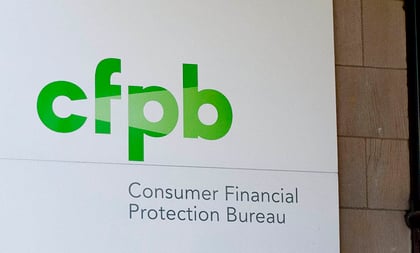 Consumer Financial Protection Bureau building in Washington, D.C. Photo by Diego M. Radzinschi/ALM
Consumer Financial Protection Bureau building in Washington, D.C. Photo by Diego M. Radzinschi/ALM
A federal judge in New York ruled Thursday that the makeup of the CFPB violates the Constitution because it is governed by a single director who only can be removed by the president for cause.
The ruling conflicts with a January ruling by the District of Columbia Circuit Court of Appeals, which ruled that the agency’s structure of having one director, who may only be removed for cause, is not unconstitutional. That ruling came in a lawsuit filed by PHH, a mortgage company.
The New York ruling throws even more uncertainty into the future of the CFPB. It only covers the Southern District of New York.
But the New York decision could lead to more lawsuits being filed challenging the constitutionality of the agency, according to Jeff Sovern, a law professor at the St. John’s University Law School. He wrote in a consumer law blog sponsored by Public Citizen that the constitutionality of the agency may end up before the U.S. Supreme Court.
In her ruling this week, Judge Loretta Preska of the Southern District of New York dismissed a lawsuit filed by the CFPB against RD Entities, saying that the CFPB “lacks authority to bring this enforcement action because its composition violates the Constitution’s separation of powers.”
The judge said she agreed with a dissent filed in the D.C. case, which stated that that the CFPB “is unconstitutionally structured because it is an independent agency that exercises substantial executive power and is headed by a single Director.”
The CFPB and the New York State Attorney General’s office sued RD Entities and its founder Roni Dersovitz. RD Entities offers cash advances to consumers waiting on payouts from lawsuit settlement agreements or judgements in their favor.
The agencies alleged that the company misled consumers into signing cash advance agreements that the company said were valid but amounted to “usurious loans.”
Preska said that the portion of the suit filed by the New York State Attorney General remains intact.









 June 22, 2018 at 10:12 AM
June 22, 2018 at 10:12 AM











